At the opening this week of the multi-media exhibition The Dead or Alive Gallery performance artist Kineret Haya Max nibbled away at a plaster wall in the gallery. An extraordinary action. But can one think of a better (or stranger) metaphor for the central question raised by the 13 artists participating in this show? In this era of technological revolution, when an artist is presented with so many creative and display alternatives, are art galleries becoming obsolete?
This is the first project mounted at this venue by Ilana Tenenbaum, the gallery’s new chief curator. Significant to note, that its subject-matter can be viewed as a follow-up to Disturbed Economy, an exhibition that took a critical look as Museums and their traditional ways of collecting and organizing material, that she curated at the Haifa Museum of Modern Art as director of its New Media department.
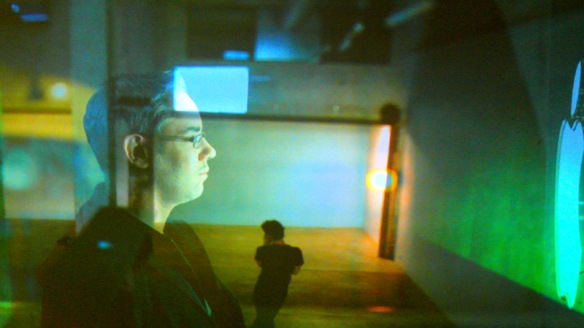
Traditionally, an art gallery is a fixed entity: white walls, artificial lighting and neutral flooring. Demonstrating that this is a design replicated all over the world are Liat Embling‘s composite images, achieved by layering fragments of photos taken of many different galleries spaces. But more exciting to look at is Ron Ehrlich‘s live feed video, a continual projection onto the gallery wall of activity in its interior space overlaid with the images of similar virtual spaces – interiors of shops as well as galleries- located by utilizing Google’s search engine.
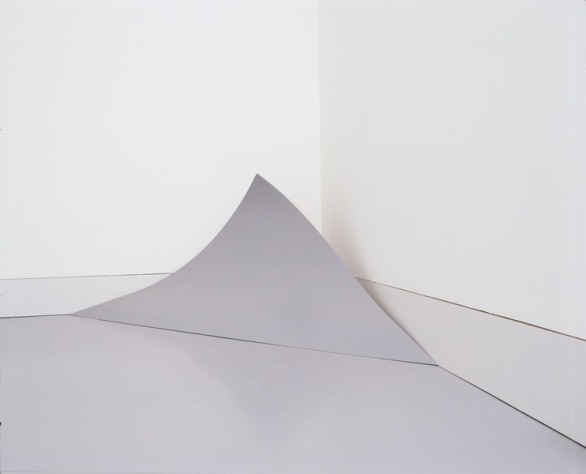
Due to their familiar design, galleries generally radiate an atmosphere of order and constancy. But these qualities are undermined in Collapsible Floor, a work that (the late) Gideon Gechtman first exhibited 30 years ago. It involved prising up a corner of the gallery floor and flipping it upwards. Although this action has produced only a small change in the appearance of the gallery it is sufficient to induce a sense of instability and strangeness.
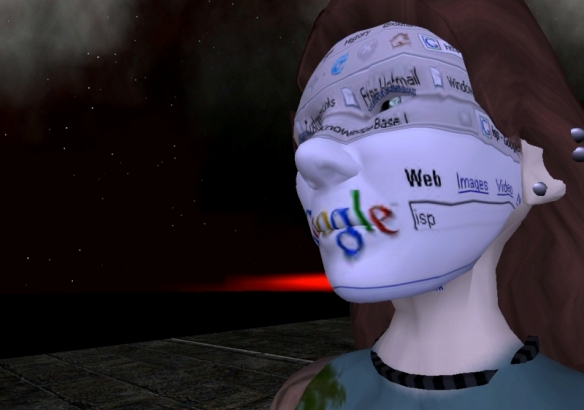
Courtesy of the artist
The joy of creating in a virtual sphere, with no need for a gallery as anchor, is convincingly demonstrated in Miri Segal‘s film BRB (a chat acronym for Be Right Back.) This work has connections to machinama – video films that make use of material culled from video games. In her case, the imagery was drawn from hours of participating, with other players, in an online game. The resulting scenario appears to merge the stories of real people with the avatar-populated fantasy world.
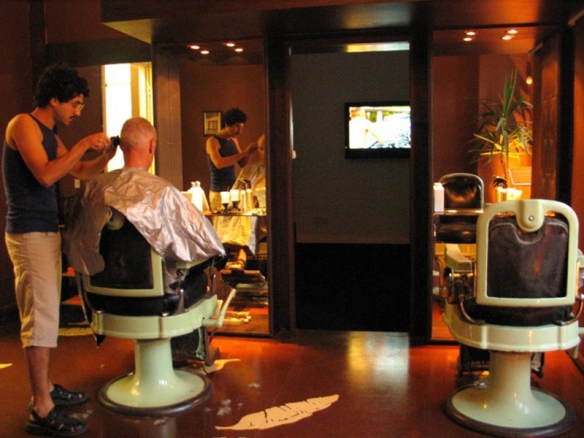
Debunking the concept of an art gallery as a temple of high art was an event, documented here, that was organized in 2008 by Doron Rabina, Nimrod Matan and Shmuel Ben Shalom. These artists set up a barber’s shop inside a Tel Aviv gallery. On the door was a announcement informing passersbys that the shop catered for foreign workers. Lured inside, their customers also found themselves surrounded and tempted to look at works of art, in particular, drawings by Paul Engelmann, an obscure Viennese-Jewish architect (although it is not clear why Engelmann was chosen.)
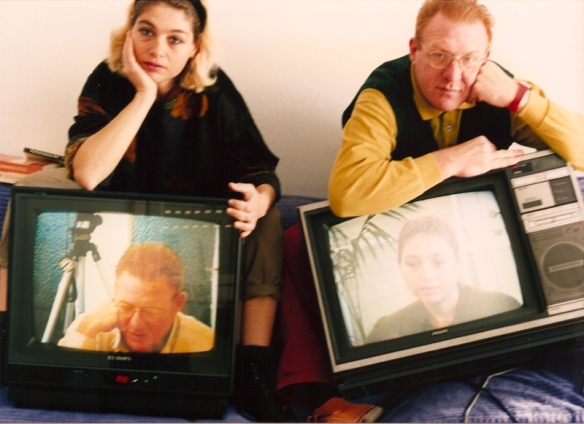
Over the years communicating with public and exchanging ideas has increasingly been the aspiration of many artists. A notable example of this trend was Tamar Raban and Dan Zakheim‘s Live-Life (an exhibition held in 1993 at the Borochov gallery Tel Aviv at a time when Ilana Tenenbaum was its curator). Discussions on art held between the two artists were relayed on two screens, with audience also participating,. Photos of their faces were hung on the gallery walls.
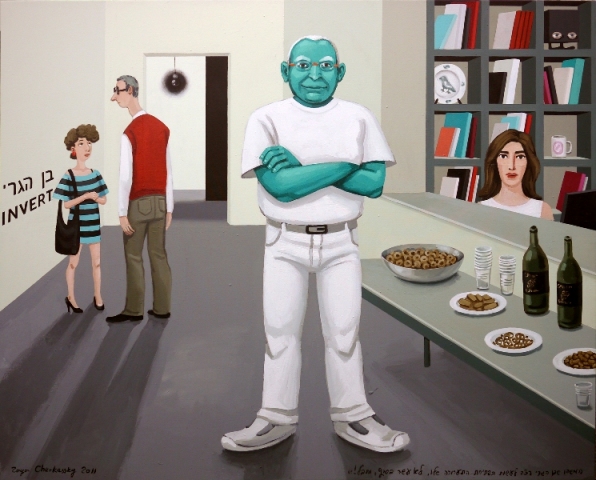
Two paintings take power play as their subject, by dealing with the often fraught relationship between artist and gallery owner. Zoya Cherkassky opts for a painting with an enigmatic title, but one that also informs us that the scene she portrays is the opening of an exhibition of the work of artist and educator Ben Hagari. Dominating the scene, is the gallery owner. Behind him, is the more tentatively painted figure of Hagari. It may be of interest to note that this artist has himself previously constructed scenes of enclosed spaces where one object is subordinate to another. In this instance, an object – himself – is the subordinated element.
Ironic in character, perhaps culled from real life, is Shai Azoulay‘s painting that shows a curator/gallery owner’s (break or make) visit to an artist’s studio. Here, the artist is shown kneeling on the floor, while a figure holding a dog straining at the leash stands over him and examines his work. Enough said.
To round off this review, I would like to draw attention to Dear John, a video by Einat Amir that documented a staged event (part of a series) that took place in 2010 at the opening of an exhibition in New York. For this occasion Amir hired a comic actor to mingle with the crowd and introduce himself as ‘the work of art’, and Amir as “the art work”. Witty dialogues ensued between the actor and some bewildered people looking around for the non-existent artworks. Through this ‘performance” Amir imaginatively demonstrates that traditional expectations regarding art and artists no longer hold; a work of art can move and change as much as its creator pleases. And the public? More often than not, they are now obliged to look beyond the gallery walls for artistic satisfaction.
Kfar Saba Municipal Gallery, 12 Geula St., Kfar Saba. Tel: 09. 7649303
Till Dec. 25th 2013.





